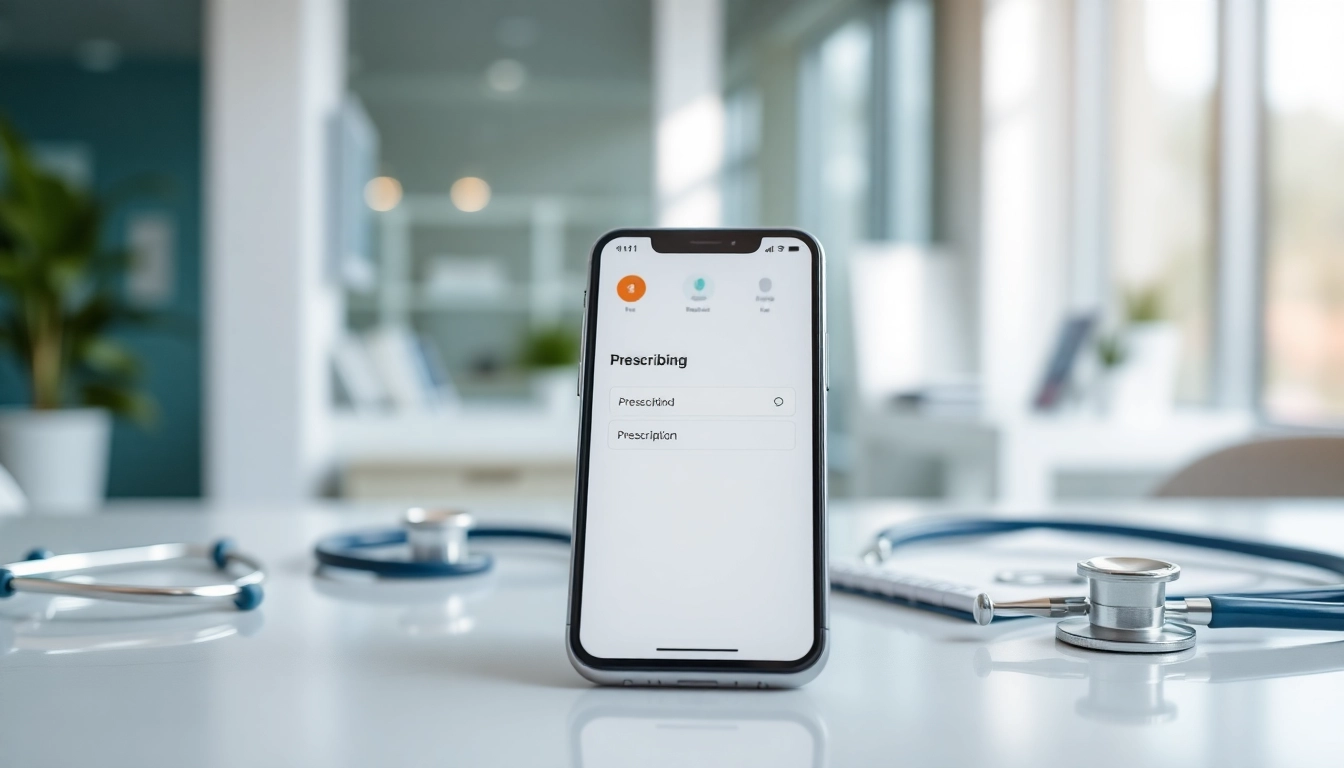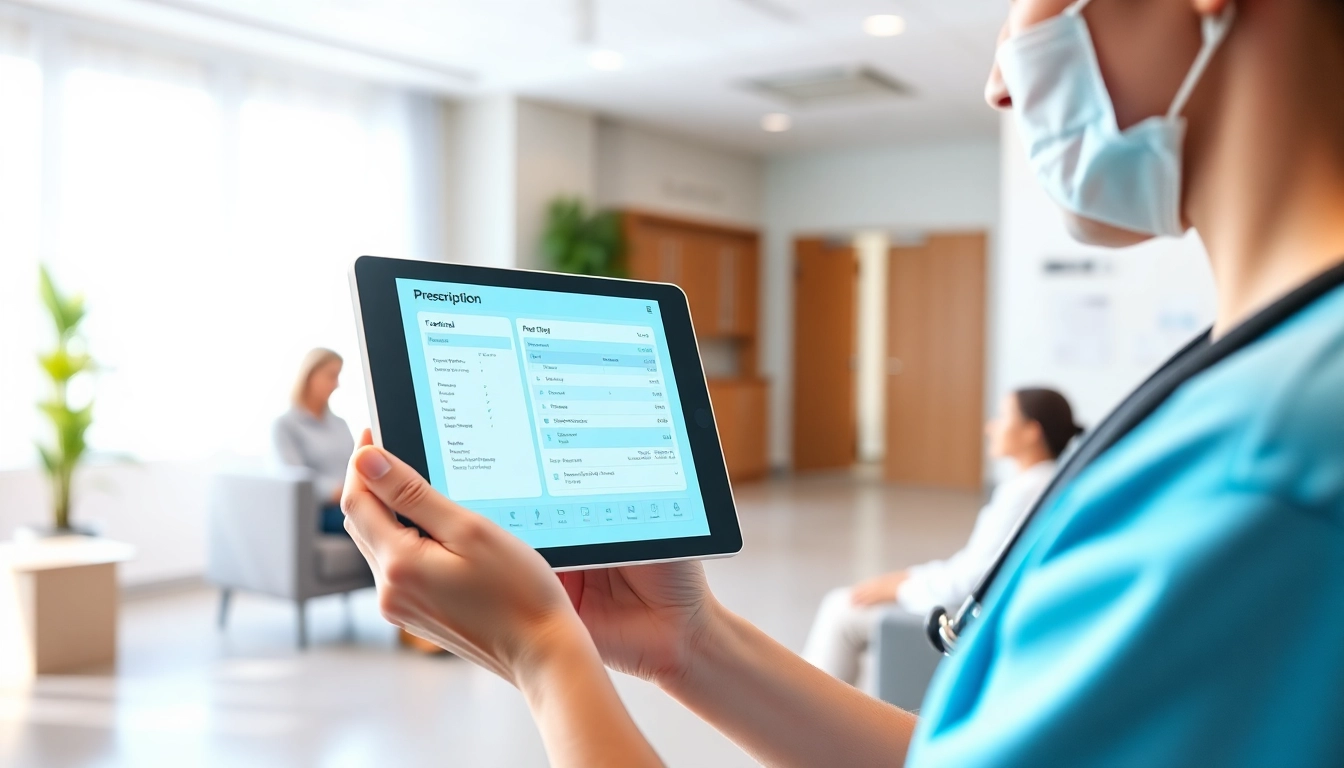Understanding the Importance of Apps for Electronic Prescriptions
In today’s increasingly digital landscape, the healthcare sector constantly adapts to advances in technology to improve the quality of care. One crucial development is the rise of apps for electronic prescriptions, which streamline the prescribing process for healthcare providers while enhancing patient safety and convenience. This comprehensive approach to e-prescribing not only facilitates efficient medication management but also fosters greater compliance with patient care protocols.
What Are Electronic Prescription Apps?
Electronic prescription apps, also known as e-prescribing apps, are mobile or web-based applications designed to enable healthcare providers to create, send, and manage prescriptions electronically. Unlike traditional paper prescriptions, these apps allow prescribers to input dosage instructions, select medications from a database, and transmit prescriptions directly to pharmacies. The real-time communication ensures that patients receive timely access to their medications, while reducing the likelihood of errors associated with handwritten prescriptions.
Benefits for Healthcare Providers
The integration of electronic prescription apps into daily practice yields multifaceted benefits for healthcare providers. Firstly, these apps significantly reduce the administrative burden associated with managing prescriptions. By automating prescription requests and refills, healthcare professionals can devote more time to patient care rather than paperwork.
Moreover, by using standard prescription formats, e-prescribing apps minimize ambiguities that may arise with hand-written notes, thereby enhancing accuracy and patient safety. Additionally, these apps offer secure access to patient medication histories, enabling providers to make better-informed prescribing decisions and avoid potentially harmful drug interactions.
Impact on Patient Safety and Medication Management
The advantages of apps for electronic prescriptions extend beyond healthcare providers; they also significantly impact patient safety. These technologies enhance medication adherence by sending reminders to patients regarding refills and dosage schedules. Moreover, real-time access to a patient’s pharmacy history allows providers to understand what medications their patients are taking, identifying discrepancies and ensuring safe prescribing practices.
Research suggests that electronic prescribing reduces the risk of adverse drug events, contributing to improved health outcomes. The seamless communication between prescribers and pharmacies fosters timely interventions, particularly for patients with chronic conditions who require ongoing medication management.
Key Features to Look For in Electronic Prescription Apps
When evaluating electronic prescription apps, healthcare providers should consider several key features to ensure the chosen application aligns with clinical needs and regulatory requirements.
Usability and User Interface Design
User experience is paramount for both providers and patients. An intuitive user interface simplifies the prescription process and decreases learning time for new users. Elements to consider include clear navigation, effective search functions for medications, and the ability to retrieve patient information quickly. Additionally, mobile optimization is crucial for healthcare professionals who need to access the application in various settings.
Integration with Existing Medical Systems
Compatibility with existing electronic health record (EHR) systems is another critical factor when selecting an electronic prescription app. A well-integrated system allows for better data flow and communication between different healthcare services, ensuring a holistic approach to patient care. This integration ensures that prescribers access comprehensive patient records and that prescriptions automatically sync with the patient’s file.
Compliance with Regulatory Standards
In the realm of healthcare, ensuring compliance with regulatory standards is essential. e-Prescribing apps must adhere to the standards set forth by the Drug Enforcement Administration (DEA) for controlled substances and comply with the Health Insurance Portability and Accountability Act (HIPAA) for patient data security. Potential users should verify that the selected app incorporates necessary safeguards to protect sensitive patient information.
Popular Apps for Electronic Prescriptions: An Overview
Numerous electronic prescription apps are available, each offering a unique array of features to cater to diverse healthcare settings. While individual preferences may vary, understanding the strengths and limitations of leading apps can aid providers in making informed decisions.
Comparative Analysis of Leading Apps
In evaluating various e-prescribing applications, healthcare providers should take into account various comparative factors such as functionality, accessibility, and ease of use. Many modern applications emphasize features like real-time pharmacy connectivity, patient medication histories, and seamless refill management. Additionally, an analytic comparison of mobile apps can help identify those that prioritize ease of use and integration capabilities.
User Reviews and Ratings Overview
User reviews and ratings can provide invaluable insights into the performance and reliability of electronic prescription apps. Analyzing feedback from current users enables potential adopters to gauge satisfaction levels, identify common issues, and assess how well each application meets its promises. High ratings and positive reviews often correlate with effective user support and ongoing updates, ensuring that the application remains aligned with users’ needs.
Cost Considerations and Subscription Models
Cost is a crucial factor when choosing apps for electronic prescriptions. Many applications operate on a subscription model, which can incorporate various pricing tiers based on features or practice size. Providers should consider their budgetary constraints while weighing the potential benefits against long-term costs. Furthermore, exploring if the app offers a free trial or a demo could help evaluate its fit for specific practice needs.
Implementing Electronic Prescription Apps in Your Practice
The transition to electronic prescription apps requires thoughtful planning and implementation to ensure integration is as smooth as possible.
Choosing the Right Application
The first step in implementation is selecting the right application that aligns with your practice’s needs. Providers should assess factors such as user requirements, integration capabilities, or specific features that may benefit their workflows. A collaborative input from staff involved in prescribing can help determine which app will best meet the team’s needs.
Steps to Successful Integration
Integrating electronic prescription apps requires clear strategies. First, deploy a pilot program to test the app’s usability in real-world settings. Gather feedback from providers and staff throughout the trial to identify concerns and manageable solutions. Furthermore, ensure that technical support is readily accessible to address any issues that may arise during the adoption process. Gradually roll out the application to the rest of the practice to minimize disruptions.
Training Staff and Managing Workflow Changes
Comprehensive training is essential to ensure that all staff members can effectively use the new e-prescribing tool. Consider hosting workshops or providing online training resources to familiarize staff with the app’s functionalities. Addressing workflow changes is crucial, as e-prescribing may alter established practices. Open communication about these changes and encouraging staff to provide feedback can foster a smooth transition.
Future Trends in Electronic Prescription Technology
As technological advancements continue to evolve, the future of electronic prescription technology promises exciting developments. Understanding emerging trends is vital for providers who wish to remain at the forefront of patient care.
Emerging Technologies and Innovations
AI integration and telehealth advancements are shaping the future of electronic prescribing. These innovations enhance clinical decision-making by offering real-time insights into patient health, potential drug interactions, and alternative medications, further improving prescription practices. Moreover, technologies such as blockchain could improve data security and interoperability among providers and pharmacies, ensuring that patient information remains private and secure.
Potential Challenges and Risk Management
With the opportunities presented by electronic prescription apps come challenges, including user adoption resistance, data security concerns, and technical issues. Healthcare providers must engage in proactive risk management by conducting regular audits and offering continued education on evolving technologies. Fostering a culture of compliance and transparency can facilitate smoother transitions and improve overall user confidence in technology.
The Role of Telehealth in E-Prescribing Evolution
Telehealth has become increasingly vital in modern healthcare, particularly since the onset of global health crises. Electronic prescription applications are integrating seamlessly with telehealth platforms to enable real-time consultations and e-prescribing without requiring in-person visits. As telehealth continues to expand, the link between virtual care and electronic prescriptions will enhance patient access to medications while ensuring safe prescribing practices.



